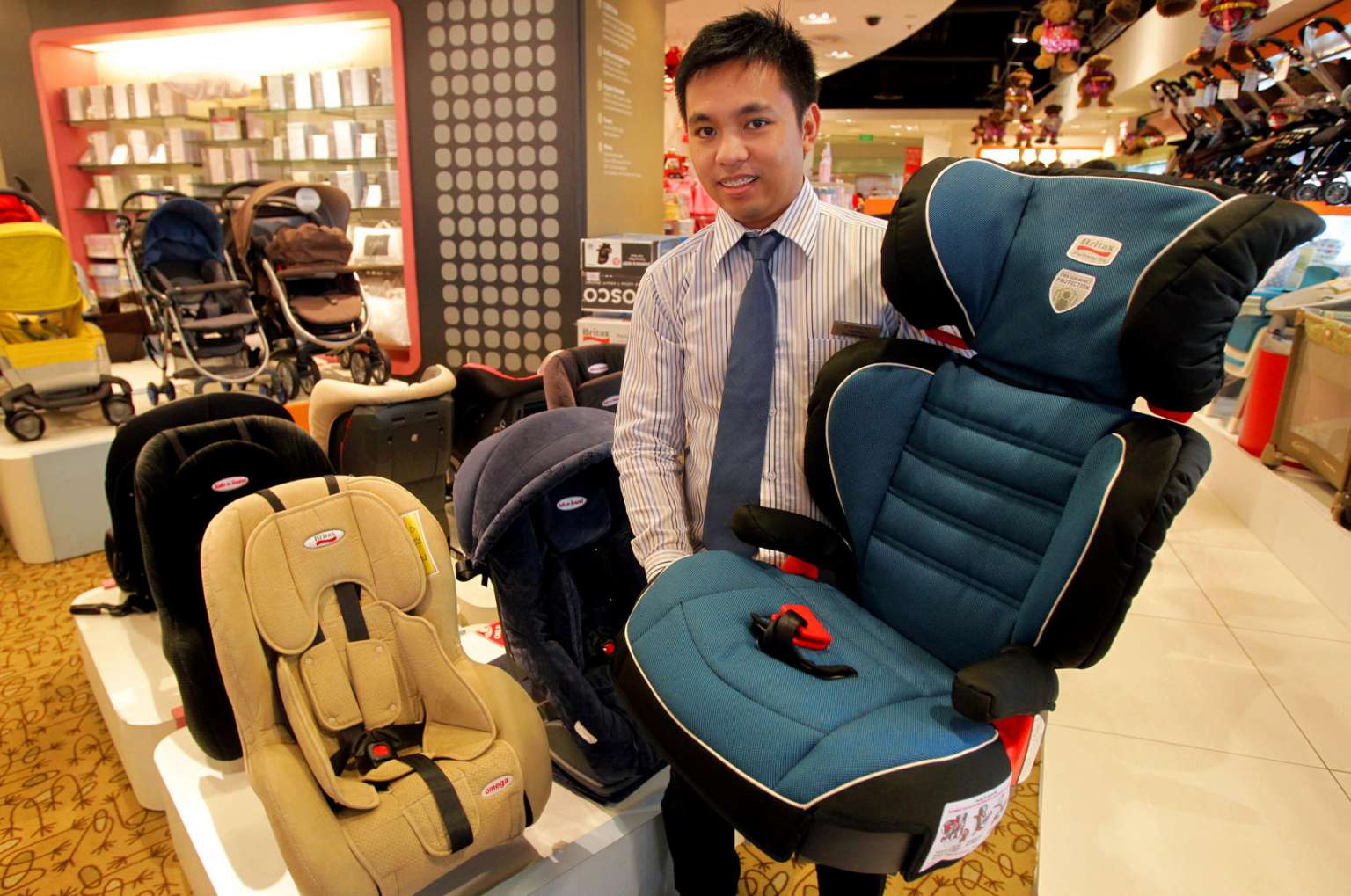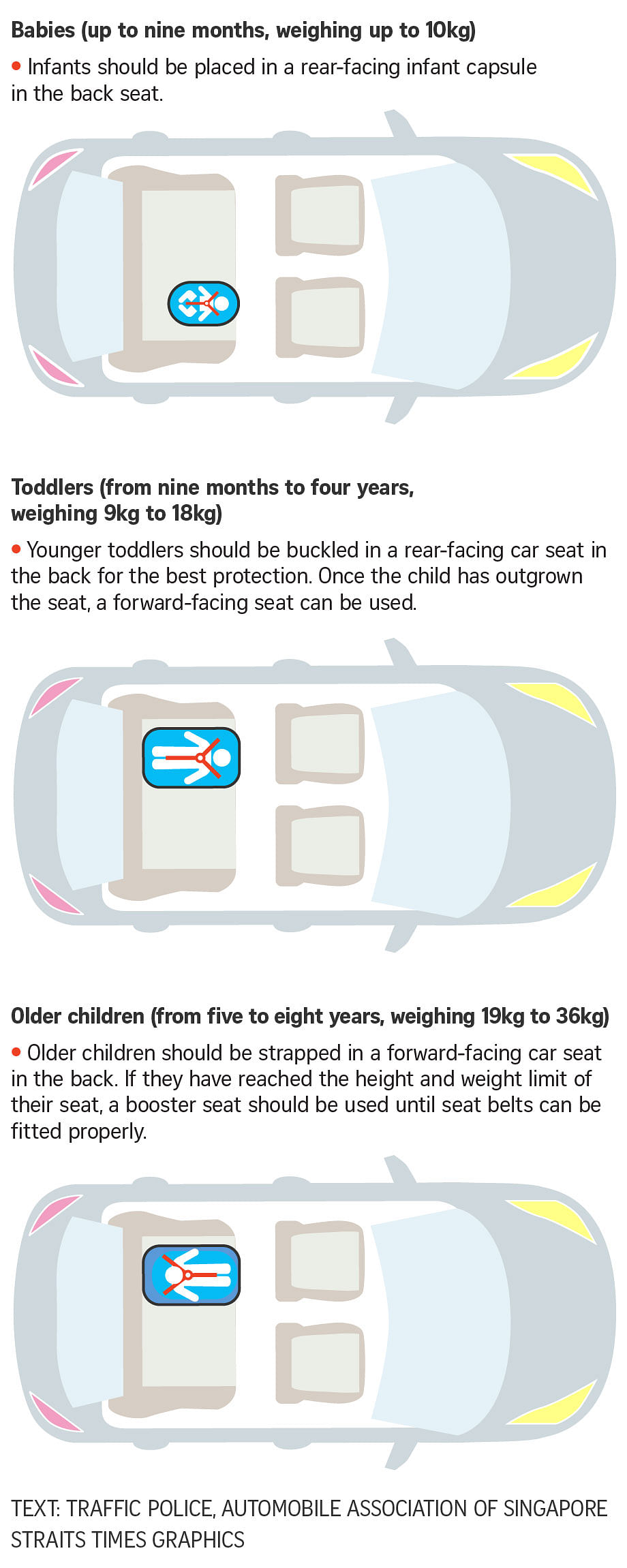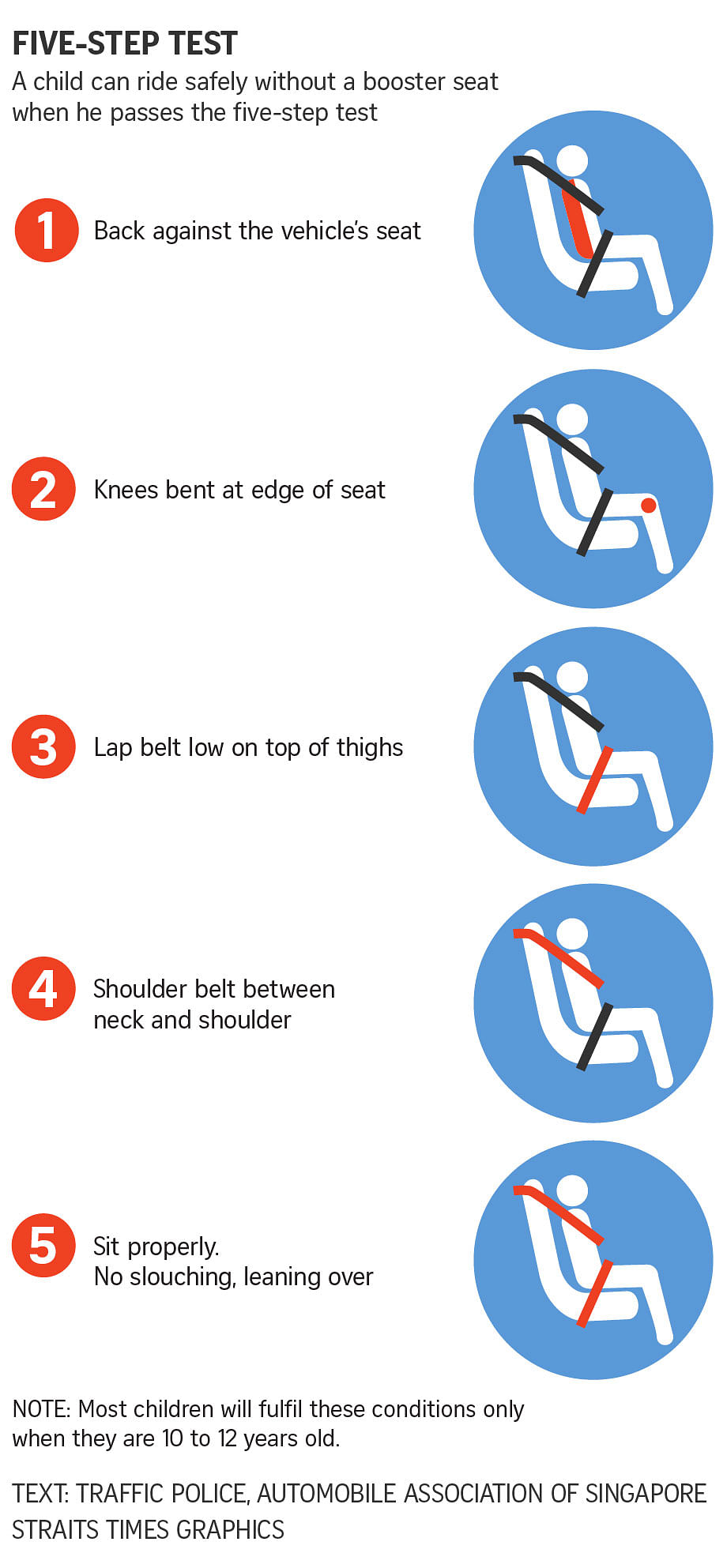Children on board: 5 safety tips for parents travelling with kids in cars and cabs
Sign up now: Get ST's newsletters delivered to your inbox

A properly fitted child restraint system can reduce fatal injuries by up to 75 per cent.
PHOTO: THE NEW PAPER FILE
Lee Min Kok
Follow topic:
SINGAPORE - Two young boys, aged three and six, were injured in a car accident which killed their mother, Ms Sim Yee Ling, at the junction of Lentor Avenue on Tuesday (June 14).
Ms Sim's elder son Tan Yu Sen, who had been in the backseat of the car with her, suffered spinal injuries. The younger boy, Wei Quan, was in the front and sustained head injuries.
It is not known if either of them were restrained in car seats or wearing seat belts.
According to a 2002 Traffic Police campaign which advocated the importance of belting up, a properly fitted child restraint system can reduce fatal injuries by up to 75 per cent and serious injuries by 67 per cent.
Here are some safety tips for parents:
1. It's illegal for anyone under the height of 1.35m, regardless of age, to be unsecured
Since Jan 1, 2012, passengers below that height must be secured in child restraints, booster seats or adjustable seat belts while travelling in a vehicle.
First-time offenders can be fined up to $1,000 or jailed up to three months.
2. Make sure children are secured in a restraint appropriate for their age, height and weight
Otherwise, the wrong child restraint may be fatal or cause other injuries instead of saving the child, Mr Gerard Pereira, training manager at the Singapore Safety Driving Centre, told The Straits Times.
Babies up to nine months, weighing up to 10kg: Infants should be placed in a rear-facing infant capsule in the back seat.
Toddlers from nine months to four years, weighing 9kg to 18kg: Younger toddlers buckled in a rear-facing car seat in the back. A forward-facing seat can be used once a child outgrows the old seat.
Older children from five to eight years, weighing 19kg to 36kg: Strapped in forward-facing car seat in the back. Adjustable seat belts should be used if they outgrow their booster seats.

3. Front versus back
According to Mr Pereira, parents should have their young children seated at the back, and try their best to avoid placing child seats in front.
If it is necessary, use rear-facing seats.
This is because the airbags in the front, while crucial to saving an adult's life, could suffocate a child due to the explosive action.
4. When does a child outgrow his or her booster seat?
While 10 or 11 is usually the age when children can ride safely without a booster seat, they should ideally pass the five-step test.
This test determines if it is safe for the child to use the regular seat belts in the vehicle.

5. What about young children taking a taxi?
At present, the law does not require passengers below 1.35m to be secured if they are seated in the back of a taxi. This also applies to buses, other than those used to ferry a child to and from school (bus owners must then install forward-facing seats with retractable three-point shoulder belts).
While it can be a pain to lug around their own car seats, Mr Pereira feels it is a necessary practice for all parents.
But should a car seat not be available, he said parents should always ensure they wear seat belts and hold onto their infant or child tightly in the backseat.

